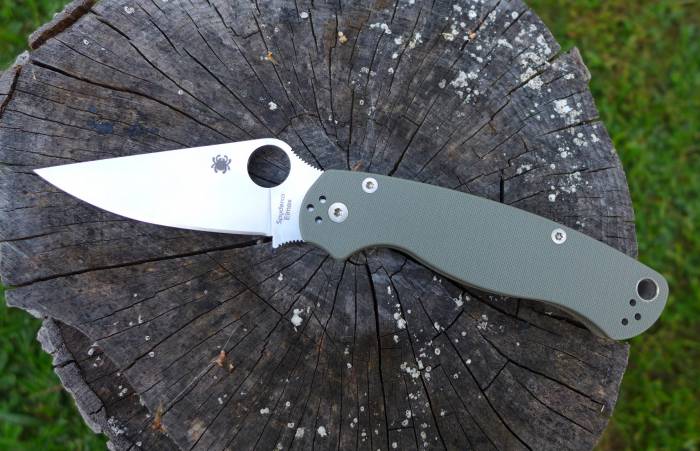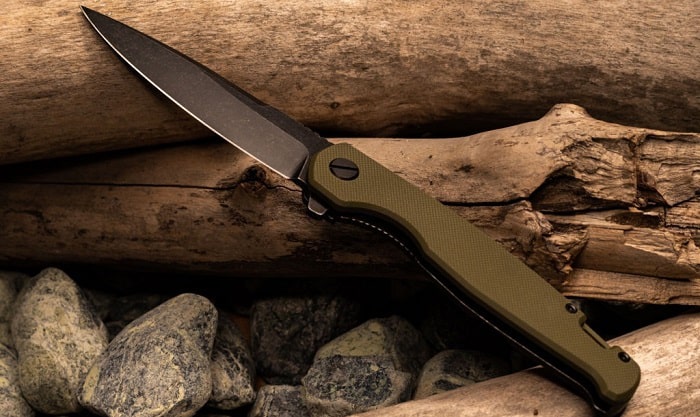For any kitchen professional, a folding knife is an essential tool that provides versatility and convenience. However, over time, these knives can become stiff and difficult to use, impacting efficiency and precision in the kitchen. In this comprehensive guide, we will delve into the methods and techniques on how to fix a stiff folding knife and ensure it remains a reliable kitchen companion.

Understanding the Anatomy of a Folding Knife
Before addressing the stiffness issue, it is crucial to understand the basic components of a folding knife. The knife typically consists of a blade, a handle, a pivot, and a locking mechanism. The stiffness often arises from the pivot area, where the blade rotates. Accumulated dirt, rust, or lack of lubrication can lead to a stiff pivot, making the knife hard to open and close.
To get a better understanding of the differences between knife types, you can check out this article about types of knives.
Common Causes of Stiffness
Several factors can contribute to a stiff folding knife. Let's explore these common causes:
Lack of Lubrication
One of the primary reasons for a stiff folding knife is insufficient lubrication. Without proper lubrication, the pivot area can become dry, causing friction that makes it challenging to operate the knife smoothly.
Accumulated Dirt and Debris
Over time, dirt, debris, and food particles can accumulate in the pivot area, leading to stiffness. Regular cleaning is necessary to prevent this build-up and ensure smooth operation.
Rust and Corrosion
Exposure to moisture can cause rust and corrosion, affecting the blade and pivot area. This not only impacts the knife's performance but also its durability. To understand more about the impact of rust on knives, consider reading about knife pivot tension adjustment.
Step-by-Step Guide to Fixing a Stiff Folding Knife
Now that we've identified the causes, let's focus on the steps to fix a stiff folding knife:
Step 1: Cleaning the Knife
Start by thoroughly cleaning the knife. Use warm water, mild soap, and a brush to remove any dirt or debris. Pay special attention to the pivot area and ensure it is free from any particles that might hinder movement.
Step 2: Applying Lubrication
Once the knife is clean and dry, apply a few drops of high-quality knife oil to the pivot area. Move the blade back and forth to work the oil into the mechanism, ensuring smooth operation.
Step 3: Adjusting the Pivot Tension
If the knife remains stiff after cleaning and lubrication, consider adjusting the pivot tension. Using a screwdriver, slightly tighten or loosen the pivot screw until you achieve the desired level of smoothness. For a detailed guide on this process, visit knife pivot tension adjustment.
Step 4: Checking for Rust and Corrosion
Inspect the knife for any signs of rust or corrosion. If present, use a rust remover or fine steel wool to gently eliminate the rust. Apply a rust-preventive oil to protect the knife from future corrosion.
Maintaining Your Folding Knife
Regular maintenance is key to ensuring the longevity and optimal performance of your folding knife. Here are some tips to keep your knife in top condition:
Clean After Each Use
Make it a habit to clean your knife after each use. This prevents dirt and food particles from accumulating, reducing the risk of stiffness.
Store Properly
Store your knife in a dry place to prevent moisture exposure and rust formation. Consider using a knife case or pouch for added protection.
Regular Lubrication
Apply lubrication to the pivot area regularly to ensure smooth operation. This is especially important if you use your knife frequently.

FAQs
Q1: How often should I clean my folding knife?
A1: It's advisable to clean your folding knife after each use, especially if it comes into contact with food or moisture.
Q2: Can I use any oil for lubrication?
A2: No, it's recommended to use high-quality knife oil specifically designed for lubrication to avoid damaging the knife's components.
Q3: What should I do if my knife remains stiff after following all the steps?
A3: If the knife remains stiff, it may require professional servicing or replacement of parts. Consult a knife expert for further assistance.
For more insights on knife maintenance and handling, explore our blog on blade centering issues and pocket clip positioning. Additionally, learn about the differences between fixed blade vs folding knife for everyday carry.
This article contains affiliate links. We may earn a commission at no extra cost to you.


























